John Freeman '24: How Study Abroad Deepened My Understanding of Classics
Like most college students, I chose to study abroad for life experience and cultural exposure, not to mention scratching a few countries off my bucket list. As a Classics major interested in Greco-Roman antiquity, I was infatuated with the ancient Mediterranean, so I naturally gravitated towards this region when deciding where to go abroad. Having spent countless hours translating and analyzing ancient Greek and Latin texts, I imagined that being in this part of the world might contextualize the understanding I cultivated from academic articles, books, and lectures in Princeton classrooms. Never did I imagine that my experience would completely revolutionize my perception of Classics, in large part because of the experiential learning that proved to be invaluable.
My first semester abroad, spring of my junior year, was in Greece through College Year in Athens. One course—Robert Pitt’s "The Topography and Monuments of Athens"—was unlike any I’d taken at Princeton. Rather than having class in the classroom, every Tuesday and Thursday morning we would meet bright and early at the archaeological site we were learning about, whether the Kerameikos, Agora, or Acropolis. There, we learned about the location on-site, covering its use in antiquity, how that changed over time, and the process of its excavation in the modern era. This experiential learning was engaging in an entirely new way that made the ancient history come to life. For the first time, I saw the Themistoclean city walls and the stoas frequented by Socrates. I witnessed the houses the ancient Greeks lived in, the theaters they performed in, and the temples they worshiped in. We even got to go behind the ropes at the Temple of Hephaestus in the Agora, the Propylaea on the Acropolis, and (my favorite) the Parthenon itself. Everything was vibrant, with a life that cannot be found in a textbook.
 John Freeman behind the ropes at the Parthenon
John Freeman behind the ropes at the Parthenon
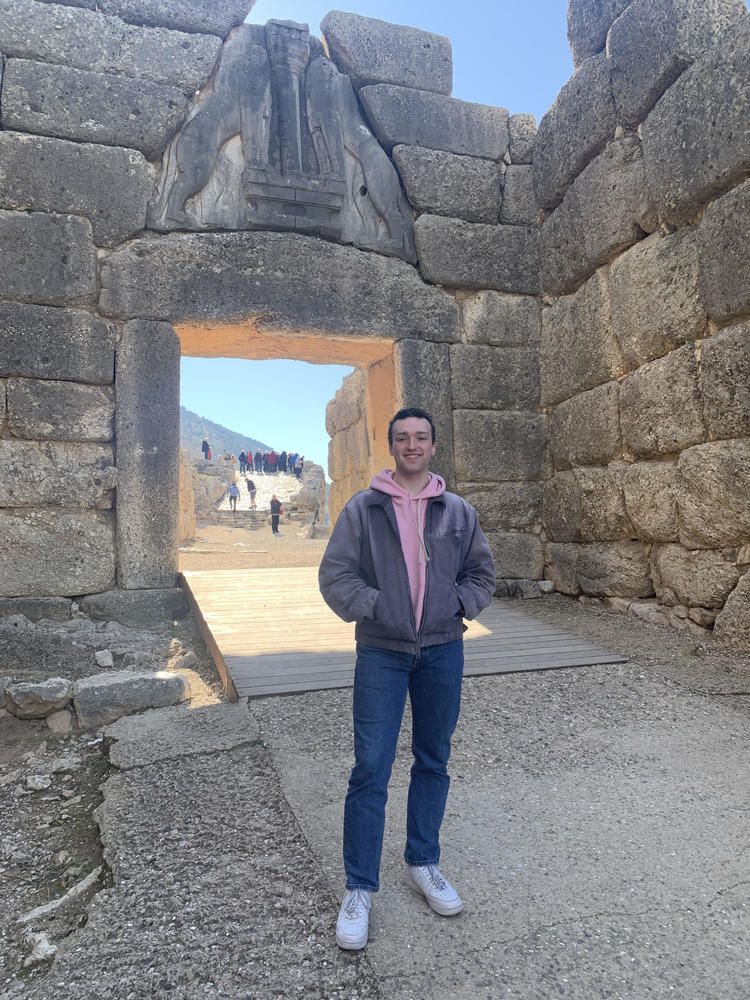 Lion Gate at Mycenae, one of the stops on the CYA field study trip to the Peloponnese.
Lion Gate at Mycenae, one of the stops on the CYA field study trip to the Peloponnese.
Field study trips organized by the program further enriched my understanding. The first trip took us to Delphi, the seat of the most renowned oracle in antiquity. The breathtaking natural beauty incited in me natural awe, explaining the significance of its remote location and high elevation. Later in the semester we went to the Peloponnese, where I saw the Lion Gate at Mycenae, Agamemnon’s mythical home, and the large tholos tombs there. We also visited Sparta and Olympia, as well as my favorite archaeological site at Messene, an expansive city where we could run (or rather frolic) around the park freely. I felt as if I myself were transported 2,500 years in the past to observe what life was like at that time.
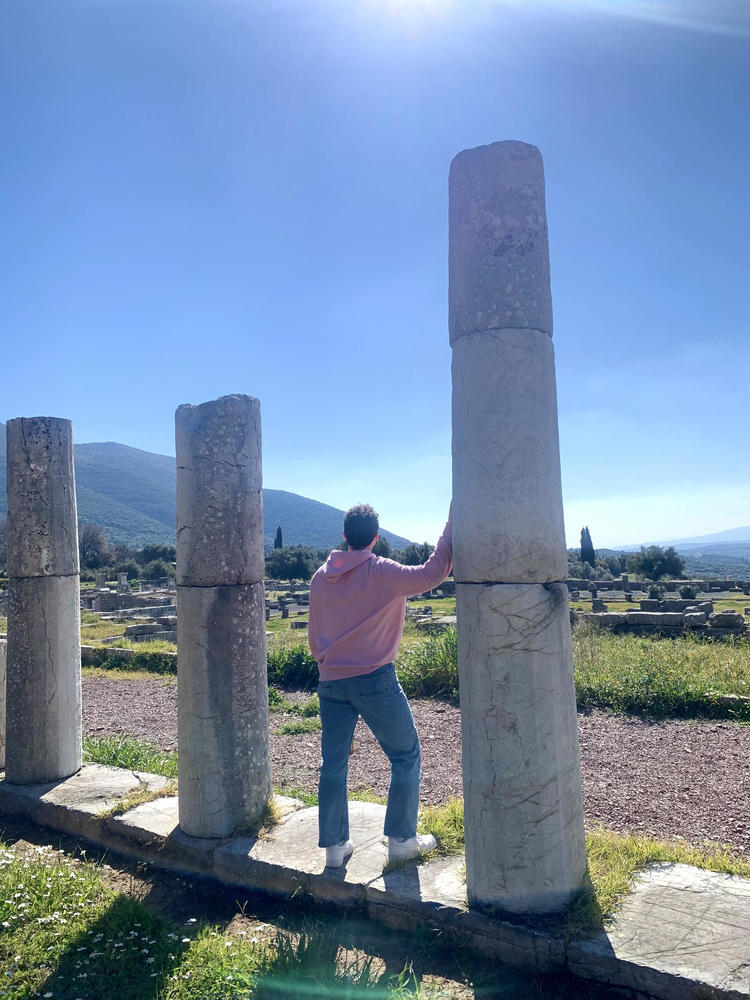 Messene archaeological park, my favorite of all that I visited in Greece.
Messene archaeological park, my favorite of all that I visited in Greece.
Experiential learning was my primary motivation for a second semester abroad, this time in Rome, Italy through the Intercollegiate Center for Classical studies. Although my knowledge of the Roman Empire was surprisingly limited, I learned at an incredibly accelerated rate. The program’s hallmark Ancient City course took us to archaeological sites and museums for on-site learning three days a week, one of which being a full-day field trip often outside of Rome. We also had week-long field study trips, one to Sicily and two to Campania (yes, we visited Pompeii twice). I cannot hope to list all the places ICCS took me, but my most memorable are Herculaneum, also destroyed by Vesuvius’ eruption but even better preserved than Pompeii, and Ostia, Rome’s port city that we took a boat along the Tiber River to get to. The astonishing preservation of these sites, complete with streets and multi-story houses, made me feel as if I were truly experiencing a glimpse into life in the Roman Period. Another highlight were the Greek temples at Selinunte in Sicily, where I gave my own on-site oral presentation, a project that functioned as one of the course assessments. Here I was able to utilize my prior experience in Greece, which helped me identify the distinctly Greek influences on this multicultural island.
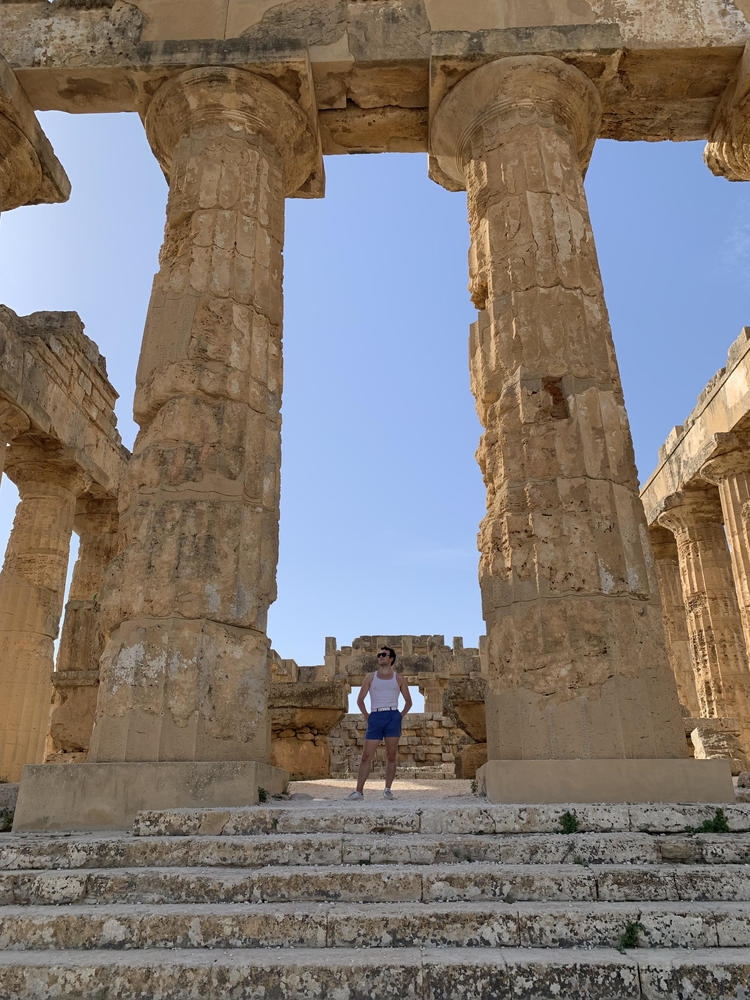 Greek temple at Selinunte, Sicily, where I gave my own on-site lecture to my fellow students.
Greek temple at Selinunte, Sicily, where I gave my own on-site lecture to my fellow students.
I became somewhat of an expert simply from going to so many archaeological sites. This was actually one of the goals for the program: for our final exam, they took us to an unknown site and had us determine what the different buildings were (e.g. baths, houses, restaurants, basilicas, latrines, theaters, amphitheater, etc.). At the beginning of the semester, this task seemed daunting, but by the end I was shocked by how easy it was, simply because we had seen so many examples of these features from visiting so many sites. It is beyond incredible how much one gains by being present in the place that one is studying. This kind of immersion was comparable to the linguistic immersion that accelerated my study of Greek and Italian. Just as being surrounded by language contextualized my language learning, so did being surrounded by archaeology contextualize my Classics learning. I returned from study abroad with a clear vision of what the Greco-Roman world looked like, not to mention a repertoire of ancient comparanda on which to draw.
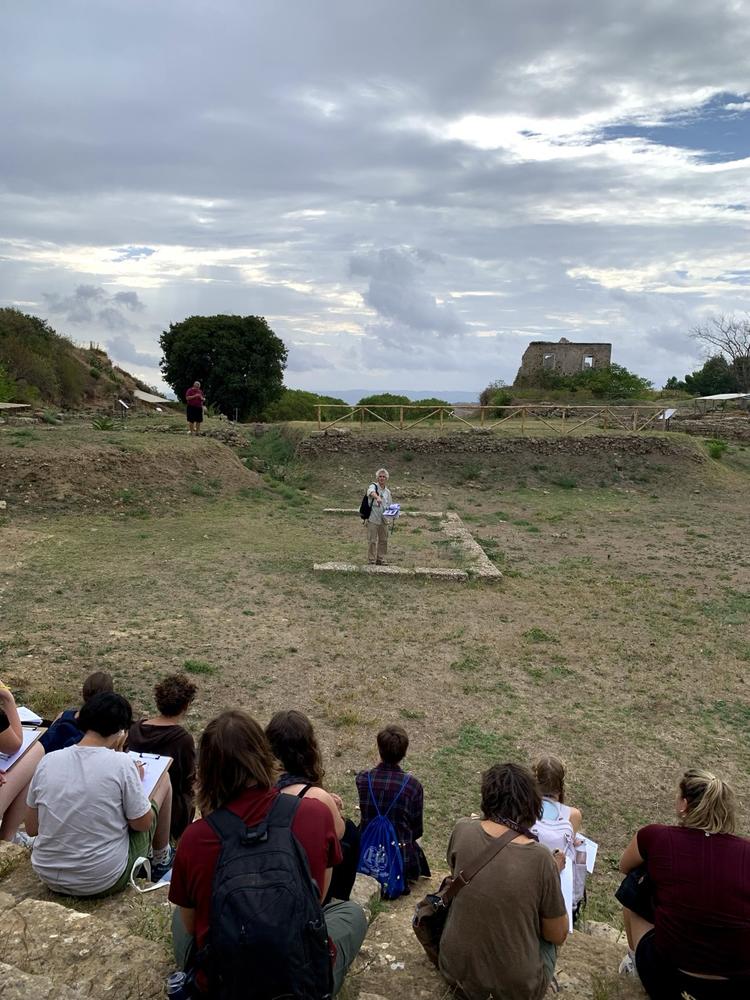 ICSS students listen to Professor Corbeill's explanation of the archaeological site at Morgantina, Sicily.
ICSS students listen to Professor Corbeill's explanation of the archaeological site at Morgantina, Sicily.
The last aspect of my experiential Classics learning that I want to highlight here is its impact on my independent work. I wrote my second Junior Paper while in Greece, and even before departing I knew that I wanted to use that to my advantage. Interested in repatriation debates and museums as institutions, I wandered the Acropolis Museum early in the semester in search of inspiration, and I found it while trying to locate the pieces of the Parthenon that had been reunified. I noticed that these fragments, coming from Germany and Sicily, were not well-labeled in the exhibit, and this became the foundation for my JP, furthered by my own observational research as well as connections with Greek archaeologists and scholars made through my contacts at CYA. The immense depth of my engagement with this issue was facilitated by my being abroad, and similarly so for my senior fall in Rome, when the Ancient City course took us to Cerveteri, an area north of Rome with many Etruscan tombs. It was during this visit to the Archaeological Museum of Cerveteri that I was first introduced to the Sarpedon Krater, looted from the area, bought by the Met, and repatriated to Italy in 2008.
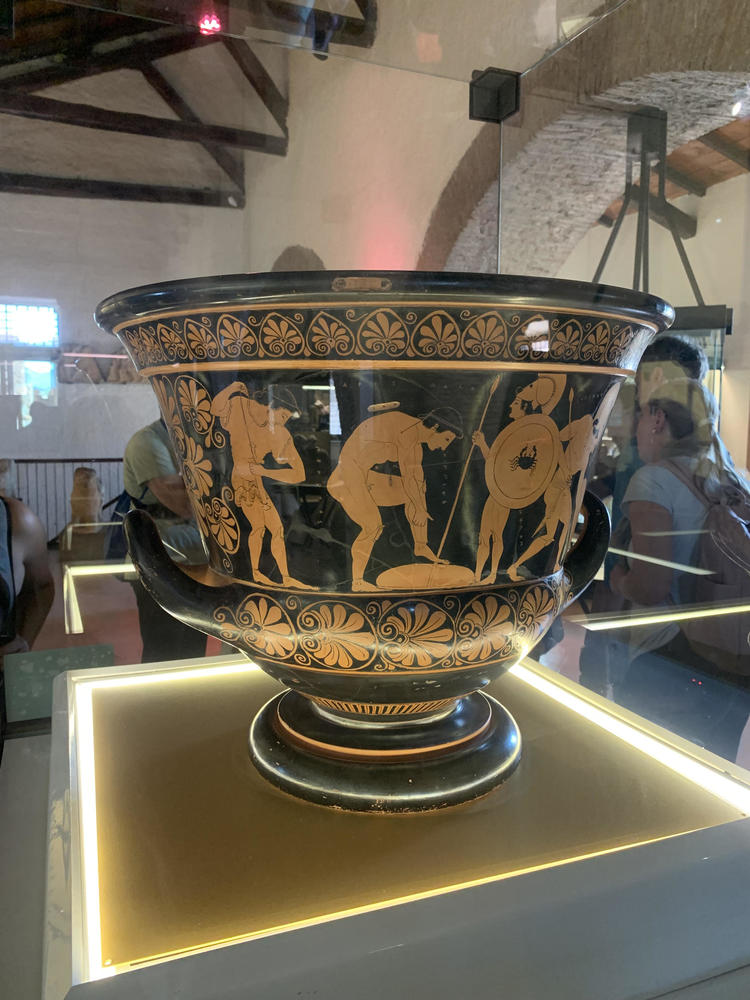 Sarpedon Krater at the Archaeological Museum of Cerveteri.
Sarpedon Krater at the Archaeological Museum of Cerveteri.
This inspired my senior thesis on the repatriation of Greco-Roman art and serves as one of three case studies to highlight the detriments of looting and the importance of local provenance. My abroad experiences elevated my scholarship by allowing me to engage with the material. I am forever grateful for these opportunities to grow as a student and a scholar.
